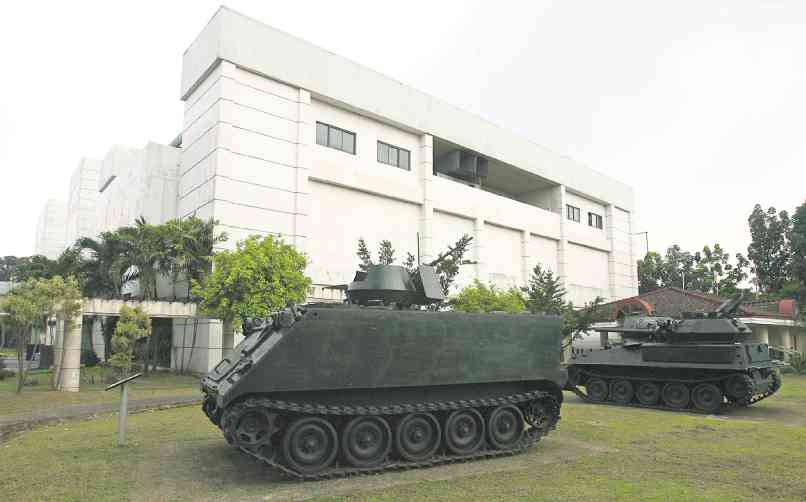
BATTLE VS BLACKOUT The AFP Museum inside Camp Aguinaldo is fighting off a disconnection notice. RAFFY LERMA
NO LIGHTS out at the Armed Forces of the Philippines (AFP) Museum—at least for now.
A day before the Feb. 3 deadline for the museum to settle its outstanding electrical bill of P1.37 million, the AFP said its power supply would not be cut off as they try to find a way to solve the problem.
“We are aware of the importance of the role of the AFP Museum and the foundation running it. That is why the command is willing to sit down with them to jointly find a solution to alleviate the present situation,” Col. Noel Detoyato, AFP Public Affairs Office chief, said Tuesday.
“Services will continue while these are being planned out by the foundation officials and the Headquarters Support Group. We are also aware that there are reservations for museum tours and we don’t want to deny the public that opportunity,” he added.
A letter from the AFP’s Office of the Non-Appropriated Funds informed the museum on Jan. 27 that it had until Feb. 3 to settle its electrical bill of P1,374,808.61 dating back to November 2013. Failure to pay would result in a power cutoff, it warned.
Detoyato explained that the AFP was just taking heed of the Commission on Audit’s observation about uncollected power bill payments from establishments at Camp Aguinaldo, the military’s general headquarters in Quezon City.
“The collections are remitted to the treasury as trust funds. Other concessionaires are treated the same way. Even government quarters being occupied by soldiers are billed monthly and are given warnings when they are delinquent,” he added.
Museum administrator Elizabeth Dapiton earlier said that based on a verbal agreement, the AFP agreed to finance part of the museum’s utility expenses. However, it started charging the facility for its power consumption in November 2013.
According to Dapiton, the museum is a nonstock, nonprofit organization which gets its funding from entrance fees and donations.